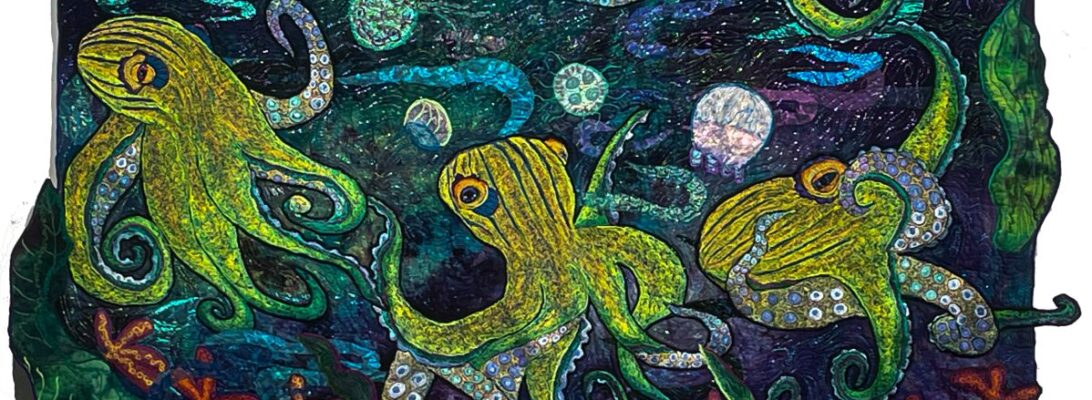
Series really almost always just happen. You make one fish quilt and suddenly there are six fish quilts. Since you’re working them within a reasonable time of each other, their techniques tend blend in with each other. Instant series.
Series are about obsessions. They’re about images you just can’t let go of. For some reason or other you’re compelled to work an image over and over again, until something settles within you and says you’ve done enough.
But every so often, you choose to make a series. That can be for many reasons. If you’re not compelled by the images you are about to die of boredom But if you’re compelled, you know what you’re doing for the next three to six months. Series are exciting because they get to answer the what-if questions.
I spoke with a gallery that expressed an interest in a show. It’s a smaller gallery, and it made me think of Monet’s Orengaria

For those of you unfamiliar, here’s a short history
The Water Lilies by Claude Monet
“History of the Water Lilies cycle
Offered to the French State by the painter Claude Monet on the day that followed the Armistice of November 11, 1918 as a symbol for peace, the Water Lilies are installed according to plan at the Orangerie Museum in 1927, a few months after his death. This unique set, a true « Sixtine Chapel of Impressionism » in the words of André Masson in 1952, testifies to Monet’s later work. It was designed as a real environment and crowns the Water Lilies cycle begun nearly thirty years before. The set is one of the largest monumental achievements of early twentieth-century painting. “
What an astonishing thing, to have a circular space, filled with Monet’s waterlilies
Monet is really the poster boy for series. His waterlilies illuminated his whole life. He painted many other things, but when I think of Monet, I think of waterlilies in the pond
Not to agrandize myself, but this little gallery would offer a chance to do an in the round kind of show experience.
Lately I’ve had a fascination with octopuses. My passions in images have to do with movement. So much of my life I’ve been constrained with a body that just doesn’t move as well as it might, I’m fascinated by the movement of creatures who are not resrrained. Nothing can move like an octopus. They also change color. I don’t know if some of the pictures I’ve been looking at are ai or not. I’m playing. They can just be wild. Why not put them in a gallery in the round?






Here are my two prior octopus quilts. I think they’re a good start
So here are my drawings for the series. There might be more. I’m not sure if they are three quilts or four. I’ll know when they’re embroidered.



So we have one octopus mostly embroidered. I’ll keep you posted as I work up the others. Encircled by octopuses. Sounds pretty wild.
































































































